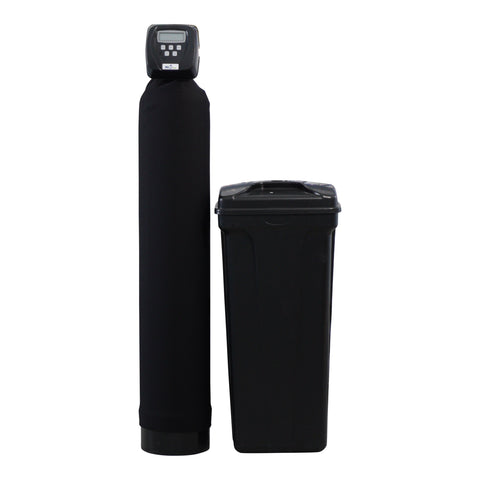
Water softener brine tanks take in water to make brine — but how much water should be in there? Should you be adding or removing some of the water? Is the amount of water in the brine tank critical in any way? Maybe yours never has any water in there!
Whether you’re a first-time do-it-yourselfer, plumber or water filtration specialist, this blog is for you. I’m Gary the Water Guy and I simplify water filtration to help you conquer crappy water for your family. Follow along as I explain where the water level should be in your brine tank so you can enjoy peace of mind and ensure your water softener is functioning as it should.
BEFORE WE BEGIN
If you're not familiar with how a water softener works, don't worry! I've created a helpful YouTube video that explains it in simple terms right here. Check it out first before moving ahead!
DETERMINING PROPER BRINE TANK WATER LEVELS

Basically, within a water softener, salt and water is used to make brine. The brine is used to recharge or regenerate the media beads. The more water that is in the brine tank, the more salt it absorbs during each regeneration. This means the salt dosage required for regeneration determines the water level in the brine tank.
Keep in mind:
1. Pre-fill water softeners, like the kind sold at Big Box Stores have almost no water in the cabinet when in service. So it’s normal to not see any water in there until the regeneration cycle begins.
This video explains the difference between pre and post-fill softeners:
>> WATCH IT NOW!
2) High Efficiency water softeners, like
AquaMaster and
WaterBoss water softeners use very little salt per regeneration, so you will find very little water in the brine tank which is why the cabinet is so small.
3) Water Softener settings for the quantity of salt used per regeneration ultimately determine the water level. Hardness and capacity settings make sure your water is soft without wasting salt and water during the regeneration.
Have your raw water tested for hardness, iron and manganese and put those settings into your water softener. From there your water softener will determine how much salt you need and then add the appropriate amount of water. For example, one gallon of water absorbs 3 lbs of salt.
So if your water softener uses 9 lbs per regeneration the valve will pour 3 gallons of water in with the salt to make brine containing 9 lbs of salt.
MORE RESOURCES
>> HUM Water Softeners - SHOP NOW
>> How to Remove Salt Clog from Water Softener - WATCH VIDEO
>> Clack Water Softener Piston and Seal Pack - SHOP NOW
>> How to Clean Clack Injector - WATCH VIDEO
4. If suddenly you have significantly more water in your brine tank than normal, your water softener is malfunctioning, and you better check out my Water Softener Troubleshooting video: >> WATCH VIDEO












